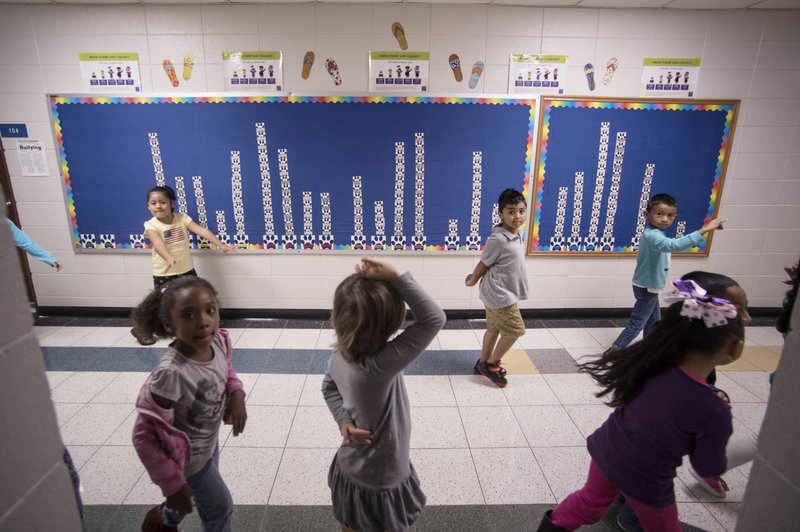Two advocacy groups for children have joined forces to try to improve school attendance as a way to increase student achievement in the state.
The Arkansas Campaign for Grade-Level Reading and Arkansas Advocates for Children and Families released a report Friday on chronic absenteeism and said they plan to work with schools and the state Department of Education on the issue.
"If a child is missing that much school, they're really missing fundamental building blocks," said Angela Duran, director of the Arkansas Campaign for Grade-Level Reading. "We don't realize how much education is happening in those earliest years."
More than 12 percent of children in kindergarten through third grade in Arkansas missed at least 18 days of school in the 2014-15 school year, according to the Make Every Day Count report. No official state definition exists for chronic absenteeism, but the researchers set the threshold at missing at least 10 percent of the school year, which in Arkansas is 18 days of school, or about two days per month.
Defined as such, the rate of chronic absence was highest in kindergarten, at 16 percent of children, according to the report.
"To many parents, missing a few days here and there may not seem like a big deal, especially when their children are very young," said Ginny Blankenship, the education policy director for Arkansas Advocates who wrote the report with Duran. "But the data shows that these absences add up quickly -- and it matters."
The study shows children who miss 10 percent of a school year are less likely to read at grade level by the end of third grade, Blankenship said.
"Students who cannot read on grade level by the end of third grade struggle to catch up throughout the rest of their years in school," she said.
Arkansas Advocates and the Arkansas Campaign for Grade-Level Reading began five years ago and work toward a goal of having every child reading at grade level by third grade, Duran said. The Arkansas Campaign for Grade-Level Reading is connected with a national campaign focused on barriers to reading, including chronic absenteeism.
Authors of the Make Every Day Count report found that among third-graders, 30 percent of children who attended school regularly during the 2014-15 school year were reading at grade level, compared with 20 percent of children who were absent at least 18 days.
The report also showed that students from economically disadvantaged families and those who have disabilities were more likely to be chronically absent than their peers.
Among the low-income families -- defined as those who qualify for free and reduced-price school lunches -- 16 percent of chronically absent third-graders were able to read at grade level, compared with 21 percent of children who missed no days of school.
The effect also was evident among children from higher-income families, according to the report. About 35 percent of chronically absent children from higher-income families were able to read at grade level, compared with 43 percent of children who had missed no days of school.
For the analysis, Kathryn Hazelett, Arkansas Advocates' former director of education policy, analyzed a statewide set of student data that was stripped of the names of students, schools and districts, Duran said.
The analysis also involved a comparison of attendance with reading scores from the 2015 statewide Partnership for Assessment of Readiness for College and Careers exam, Duran said.
Parson Hills Elementary School in Springdale is featured in the report, along with Monitor Elementary School in Springdale and Marvell-Elaine Elementary School in east Arkansas near Helena-West Helena.
Parson Hills' involvement in the study over the past year led Principal Heather Cooper and counselor Eduardo Nava to run reports of all students' attendance records every few weeks to identify children with frequent tardiness and those who had been absent 10 percent of the time or more, she said.
Children with excessive absences are assigned a mentor from the staff who checks on them several times a week, Cooper said. Staff members previously had acted as mentors for children who struggled academically, but providing mentors to children with excessive absences as well has resulted in improved attendance, she said.
Teachers make the first contact with parents when school staff members notice an attendance issue, and they check to see whether problems at home are keeping a student away from school, Cooper said. Nava and Cooper follow up if students continue to have excessive absences or tardiness.
"If they're not here, they can't learn," Cooper said. "They fall quickly behind their peers."
Metro on 10/16/2016
